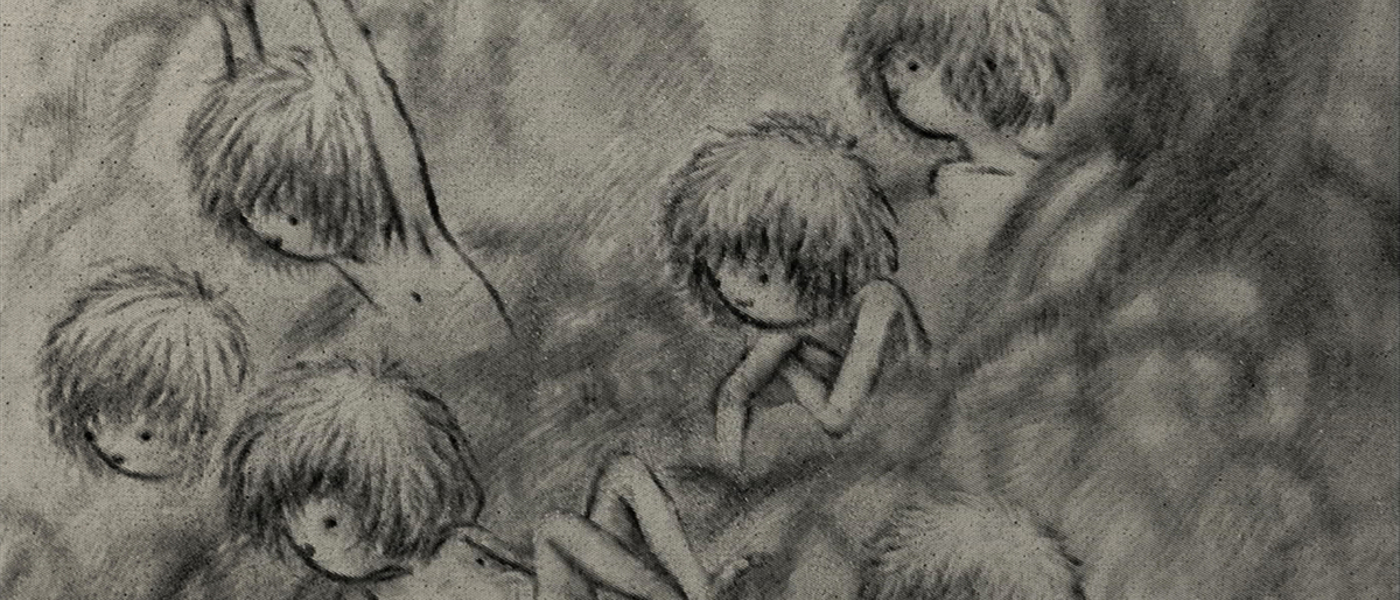About The purple season
by Marie-Pauline Mollaret

by Marie-Pauline Mollaret
Faces reflect on the water and disappear with the ripples. Bodies vanish in the mangrove. Wildlife rustles to the tune of the characters, and girls are left to their own devices in a verdant, liquid environment. The Purple Season is a delicate, poetic film where everything shifts and nothing is disclosed outright. Things come and go, they hide off-screen; it is a delicate, poetic rendition of a wild utopia where this special, brazen stage of mankind can be let free.
Interview with Clémence Bouchereau
"The young girls in the film are part of a whole, a distinct entity in an interconnected living, breathing world. The environment influences their behaviour and magnifies the emotions they experience. It is an unembellished take on childhood, my own outlook, steeped in a blend of loneliness and tenderness. These girls experience what they should at their age, but on their own. They each have their own adjoining, intersecting paths. They follow the elements at a gentle pace, according to a daily routine. Puberty comes as undeniable evidence of growth. They see each other differently, and a growing feeling of being different dawns on the eldest, both excluding and inviting her to leave.
Pinscreen animation, which is used in The Purple Season, requires a massive device made of thousands of retractable pins in tiny tubes, backlit by a spotlight. The pins cast a shadow on the screen, thus creating the images. So I was working from both sides of the screen, hugging the screen as it were, due to the lack of space. I believe it made a lot of sense for me to draw moving bodies on the screen, as if I was trying to escape the static nature of drawing and using the screen to bounce off the physical tension it was inflicting on me.
The constraints imposed by the device and my personal limitations made me scale down and find both the visual identity and the mise-en-scène of the film. Since I’m right-handed, it was easier for me to use the right side of the screen, whereas I had to contort myself to work on the left side. Inevitably, it had an impact on the composition, the direction of the movement within the frame, and demanded I be careful when animating what appeared, disappeared, and remained static. The square frame was yet another constraint that I grabbed onto to build off-screen storytelling. I wanted to open the space beyond the screen, where sound takes over from pictures. When making an animation film on your own, you need to regenerate your creativity throughout the process; and this had a direct and organic impact on the pace of the film, which evolved and shifted. It was both a means to a specific result and a way not to get bored.
For me, when something is right, it somewhat expresses itself without words; there’s a truth that only exists in doing and the complexity within is merely felt, it requires no noise, no words. I believe there’s an intimacy that reveals itself if you keep reason, intellect and any desire to understand at bay. My intuition guided me; I drew the film by following up on the animated content that was building up, keeping an eye on the mental projection of the film in the making, which kept shifting. I got lost at times; I often got ahead of myself, and that made me tired and confused. When that happened I would stop, take a step back and make the necessary adjustments. Some awkward sequences were therefore cut along the way.
Making The Purple Season took two years of my life. Had I known what I was looking for from the very beginning, I would never have spent the time it took. Any creative endeavour is bound to have its load of mystery. It forces you on a path that raises your awareness, makes you shine a light on new certainties, and casts unfamiliar shadows. All of this is more easily felt than explained, and I trust that this film reflects my experience of this undertaking."